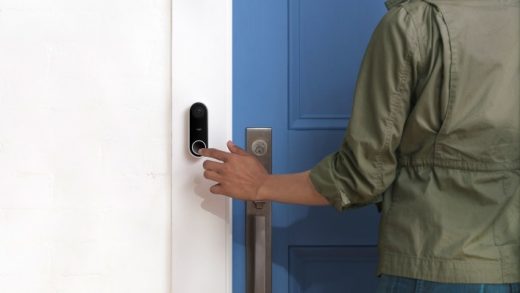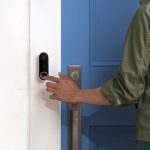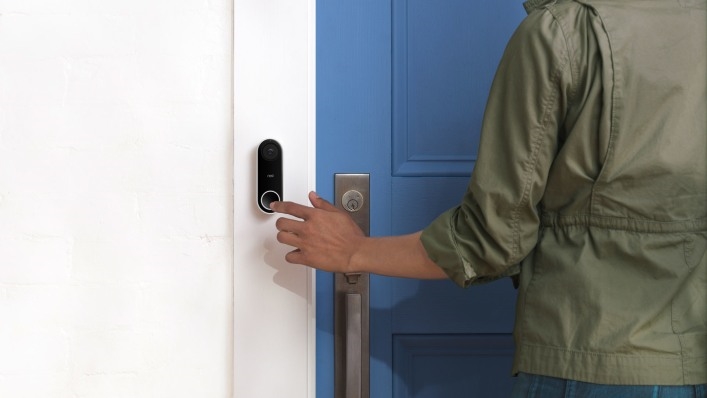Nest Is Finally Starting To Feel At Home In Google’s Castle
Three and a half years after being acquired by Google for $3.2 billion, Nest’s identity within its parent company–now called Alphabet–is starting to gel. The main reason for this is the Google Home smart speaker, and the emergence of Google’s speech-activated Assistant, whose AI brain has sparked more opportunities to make Google and Nest platforms work together seamlessly.
For a time after the acquisition, Nest’s product lineup of smart thermostats and cameras (and a smoke detector) didn’t change very much. Nest had been slow to release wholly new products, and slow to work with its new parent on new AI-infused products.
Things are different these days. “Google Home and the Assistant changed the story,” says Rishi Chandra, the Google VP who leads the company’s home hardware division. “We worked together very heavily on the product definition of Google Home.”
Chandra told me his group grew up with a focus on media, developing such products as the Chromecast streaming devices and the Google Wifi router. Chandra himself has product managed both Google TV and Chromecast at Google. Google Home is also a media device–it streams music and reads news–but it was also clear that the Home would come to be seen by consumers as a natural language device for controlling all kinds of smart home devices, including ones made by Nest.
Since Google acquired Nest to strengthen its hand in the burgeoning connected home space, it was natural and vital that Nest be involved in the creation of the Home speaker. So the two engineering groups built the product together, along with Scott Huffman’s Assistant team, which would provide the AI brain.
The Home speaker has been available for over a year now, but we’re just beginning to see the front edge of functions that leverage both the Google and Nest platforms. “We’ve started building product experiences that work best when you put Nest and Google together,” Nest cofounder Matt Rogers said.
Case in point: Google Home users will soon be able to say “OK Google, show me the entryway on my TV” and the view from a Nest security camera will show up on their TV via a Chromecast streaming device. And next year, when the new Nest Hello doorbell cam recognizes a person who has just rung the bell, it will tell the Assistant to announce the arrival of that person on every Google Home device in the house.
Further out, both Chandra and Rogers see AI helping Nest’s and Google’s smart-home products become better at learning about the households they serve.”Our mission is to build a home that takes care of the people inside it,” Rogers said. “To be able to say, “Hey, we know that your kids usually come home at about three, and we’ll let you know if they don’t.”
“That’s one of the things I’d love for the home to be able to figure out,” Rogers said. “That’s part of the promise of AI.”
Actually, Nest may have seen the home speaker coming even sooner: The company advertised to hire an audio engineer in March 2015, which some took to mean that the company was planning to build some kind of speaker device. When I asked Nest about it, I got a “no comment.” If such a product was real, it went nowhere after Nest became a Google company.
Fitting In
Perhaps most importantly, Nest’s work with Google around Google Home may have brought its own identity as an Alphabet company into sharper focus. Nest and Google began to think about what it will take to create a combined connected home platform that would make sense for both companies’ home devices, for Android, and for the Assistant. Fortune reported in August of 2016 that Nest’s entire platform team had joined Google “in order to create a unified Internet of things platform.” The team would also work on Google Home, the report said.
Also in 2016, Nest engineers began spending a lot more time with Google’s artificial intelligence people to leverage the computer-vision AI in its security cameras. A month after Google Home’s coming-out at Google I/O in May 2016, Nest announced a security camera with “person recognition,” or the ability to distinguish an approaching person from, say, a dog or a tree. The following year, Nest cameras would gain the ability to recognize specific faces of familiar people, like the postman–again, thanks to Google computer vision tech.
This all happened after the departure of Nest cofounder and CEO Tony Fadell in June 2016. Whether Fadell had placed barriers in the way of Nest’s collaboration with Google is up for speculation. From the outside, at least, it appears that Nest became far more engaged with Google after Fadell left, and that Nest’s main consumer-facing contribution to the Google-Nest offering for the connected home will be mainly home security products.
Notably, Nest chose as Fadell’s replacement a former Motorola exec named Marwan Fawaz, who had served as an advisor to home security giant ADT.
“We are definitely a security company,” Rogers said. He said Nest remains very committed to its smart thermostats business, and points out that it bought into the camera business with the acquisition of Dropcam in June 2014. So moving into security products was “a natural transition.”
As if to reinforce the new direction, Nest last month announced the Nest Hello doorbell cam, and, more importantly, a simple, DIY home security system called Nest Secure. The security system includes a base device (with a keypad, sensors, and a loud alarm) and a series of combination door/window-motion sensors to place throughout the home.
The idea was to offer a simple, plug-and-play security system that the user can install without the help of a technician. (Nest cites research showing that 43% of security system owners routinely leave their system off because it’s a headache to program and arm.) Not that Nest Secure is completely DIY: The company has an arrangement with MONI to provide customers with 24-7 monitoring of the system. Rogers said that finding just the right mix of DIY and professional services may be the key to success in home security.
“Now we’ve got a whole range of products that touch on all sorts of levels of security clearance, from the perimeter of your home to the inside of your home, and we’re working with partners to provide all these different technologies to keep your home secure.” One of those partners is Yale, with which Nest collaborated to create a deadbolt lock that can be controlled by the Nest Secure system.
Now Nest and Google are working together to put Google’s Assistant into Nest products. Users can already speak to the Assistant inside one of Nest’s older indoor cameras, and the Assistant will almost certainly be showing up in other Nest products. Rogers said it’s very easy to imagine the Assistant being added to the Nest Secure system’s “brain” device, aka Nest Guard. Nest might add a couple more microphones to the device to make it better able to hear voices in the room, Rogers said.
Growing Up?
Rogers said his company’s first priority after the acquisition was to build up its user base to Google-size numbers. Google set an expectation of $300 million in revenues per year for Nest. Nest’s first priority during the first two years with Google, then, may not have been releasing new products, or even working with its new parent.
Alphabet doesn’t report Nest’s revenues, but rather lumps them into an “Other Bets” line item along with the results of seven other companies including the Access internet and TV business (formerly Google Fiber) and the life sciences company Verily. As recently as 2016, Nest is estimated to have contributed more than three quarters of total Other Bets revenues.
If that’s even roughly accurate, Nest revenues may have grown rapidly last year. Alphabet’s 2016 annual report says Other Bets revenues increased by $364 million from $445 million in 2015 to $809 million in 2016. But those businesses, taken together, still contributed less than 1% of total Alphabet revenue in 2016.
Fast Company , Read Full Story
(40)














